A dark, glossy river stone instantly creates visual calm and crisp definition, and Black River Rock is prized for combining beauty with practical muscle—its weight curbs erosion, its non-porous surface discourages weeds, and its color sets off plants like living artwork. Designers lean on it for drought-smart xeriscapes, rain gardens, heat-soak micro-climates, and sleek modern courtyards. Because the stones rarely need replacing, they’re a lifetime investment that saves water, slashes maintenance, and adds textural drama year-round. Keep reading for twenty tightly focused ways to make Black River Rock the backbone of a stunning, resilient landscape.
1. Clean-Cut Lawn Edge with Black River Rock
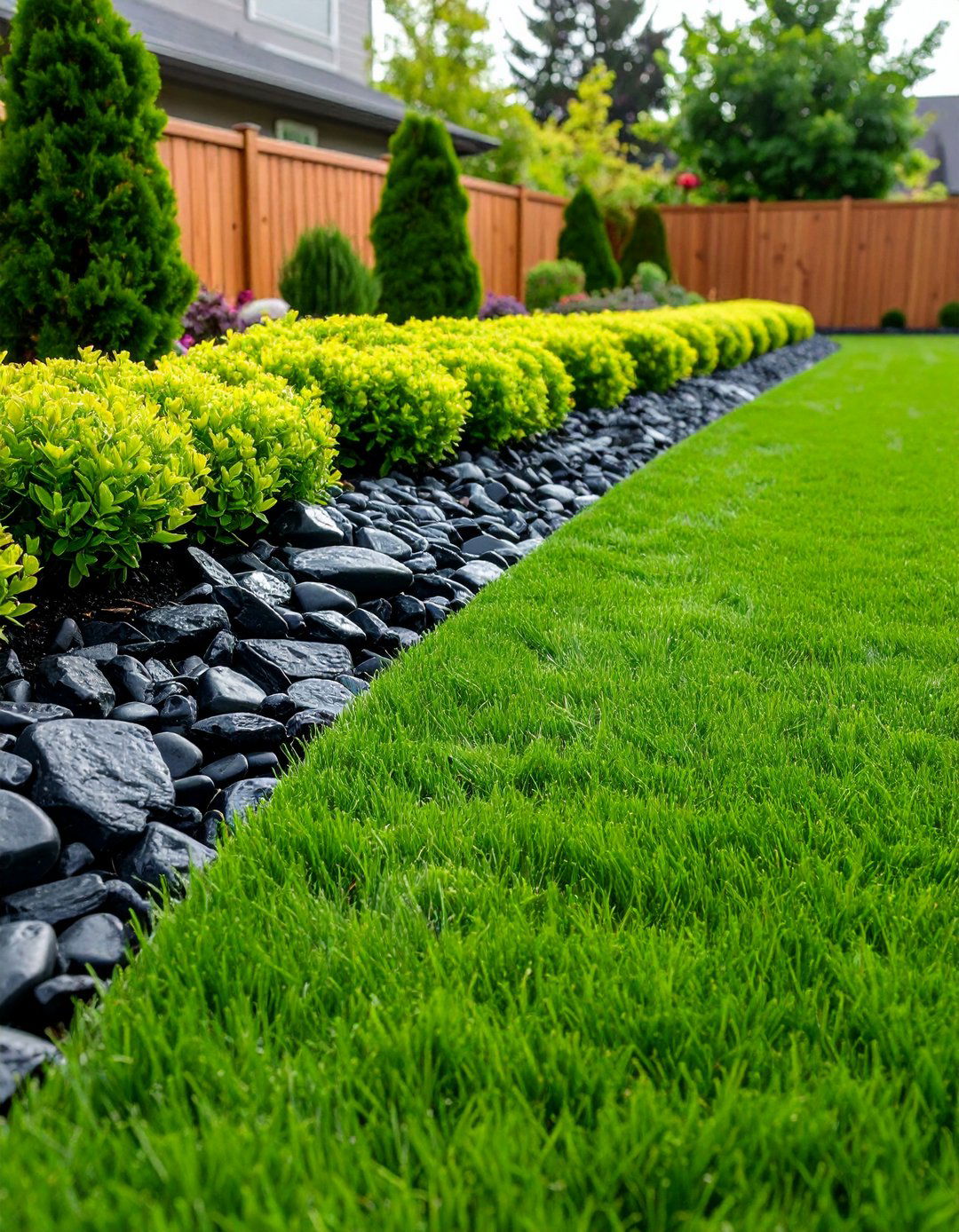
A tidy border is the quickest facelift a lawn can get. By trenching a shallow V-groove and filling it with Black River Rock you form a weighty barrier that stops turf runners, keeps mulch in place, and frames flowerbeds like a charcoal picture frame. The stone’s heft prevents washout even on gentle slopes. Weed seeds struggle to germinate in the gaps, meaning fewer Saturday hand-pulling sessions. Rinse the stones once a season and they’ll gleam again—no annual top-up required. For extra polish, tuck low-growing sedum right behind the rock ribbon so lime-green foliage pops against the black.
2. Contrast Stepping-Stone Walkway on Black River Rock
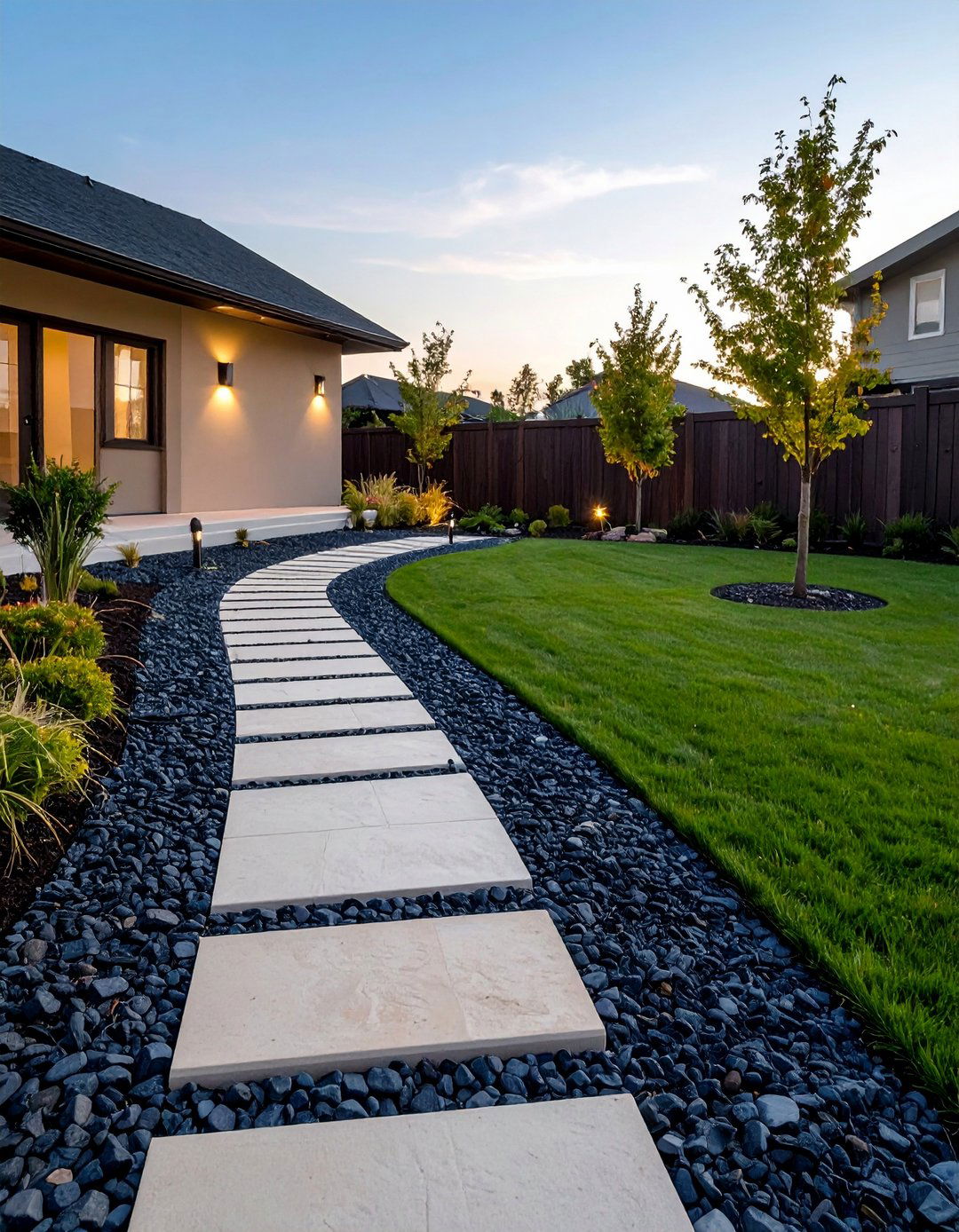
Looking to stretch a flagstone budget? Scatter oversized pavers six inches apart, then flood the joints with Black River Rock. The dark filler outlines each step like grout around tile and highlights the stone’s shape. Because rounded river rock shifts underfoot, first tamp a two-inch crushed-gravel base; then the top layer behaves like flexible mortar, draining stormwater instead of puddling. At night, solar path lights bounce subtle highlights off the polished pebbles, adding mood without glare. This approach suits cottage gardens and minimalist courtyards alike while reducing runoff compared with solid concrete.
3. Pocket Zen Garden Anchored by Black River Rock
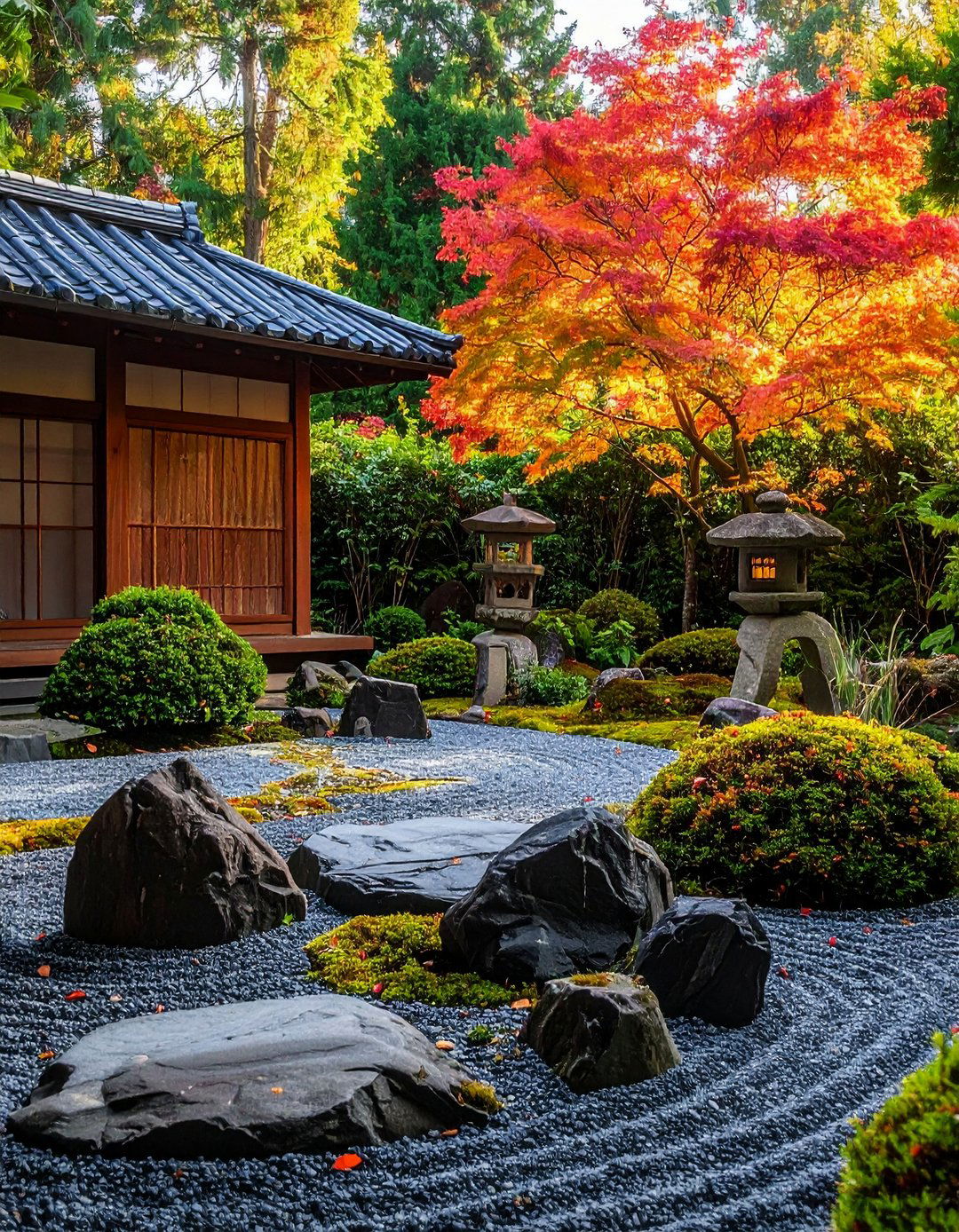
Few materials channel tranquility like cool, black pebbles raked into gentle ripples. Carve a four-by-six-foot niche, lay weed barrier cloth, and pour a two-inch sea of Black River Rock; then set a basalt lantern or dwarf maple off-center as a meditative focal point. The muted palette declutters visual noise, letting every leaf and stone contour stand out. Because the rocks absorb daytime heat and release it overnight, true mosses and shade-loving ferns enjoy stable humidity in humid regions. Keep a bamboo rake handy—five mindful minutes reshaping the gravel is stress relief and surface maintenance in one.
4. Dry Creek Bed for Invisible Drainage
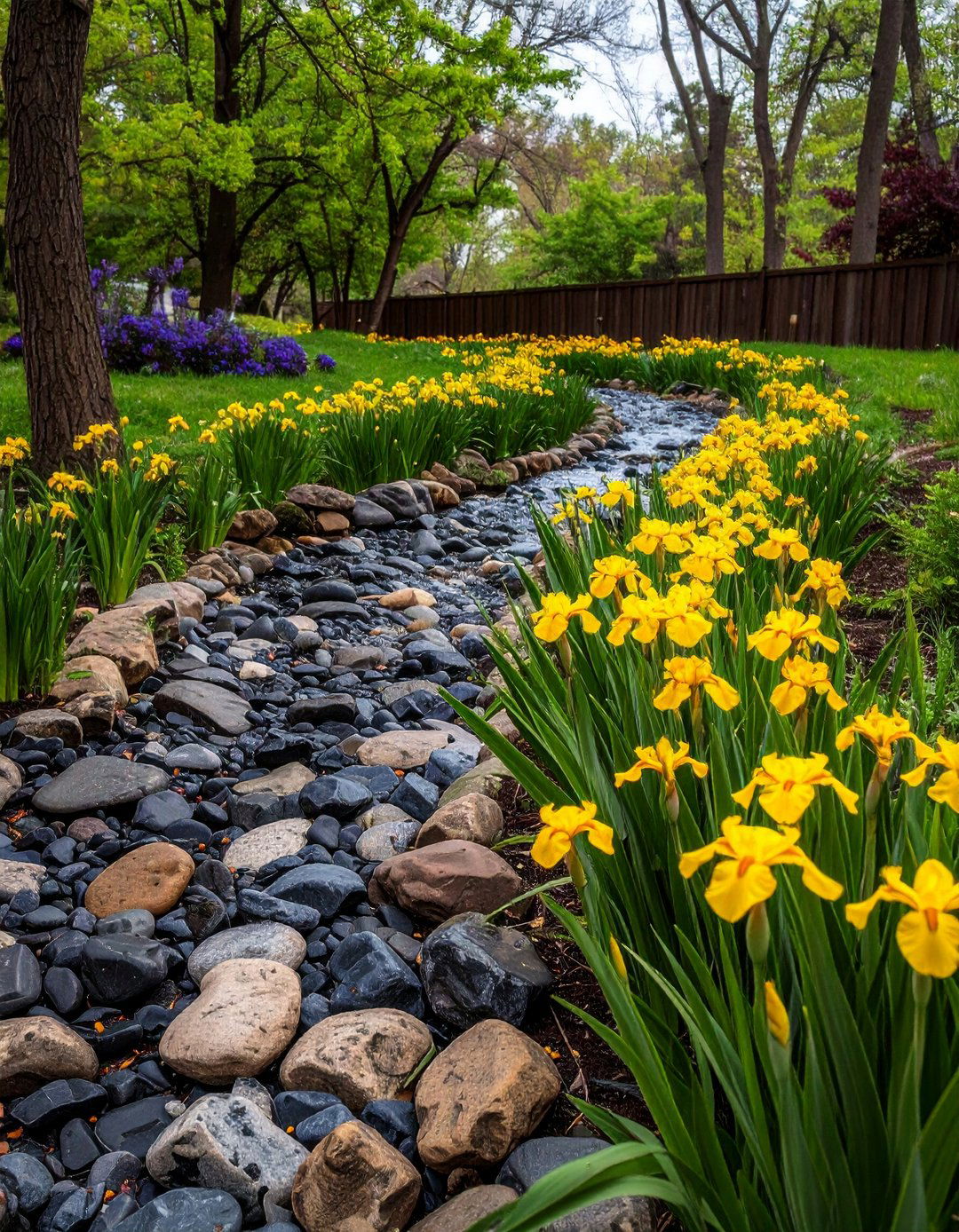
If downpours carve trenches through your yard, a faux stream of Black River Rock is both sculpture and solution. Dig a winding swale that slopes one inch per ten feet toward a safe outflow, line it with fabric, and pack the channel with three stone sizes: football-size accents, egg-size fillers, and chocolate-chip top scatter. During storms, water slips between the gaps, slowing erosion while the dark stones disguise mud stains. Plant moisture-loving iris at the “banks” for a pop of yellow against charcoal hues. Add flat stepping stones every few feet so the feature doubles as a footpath when dry.
5. Rain-Garden Basin Cushioned by Black River Rock

Climate swings now mean flash storms followed by drought. A shallow depression ringed and bottom-dressed with Black River Rock collects roof runoff, giving roots time to sip instead of letting water race to the street. The rocks protect soil from compaction and act as a visual cue that this is a purposeful water pocket, not a soggy failure. Layer moisture-tolerant natives—blue flag iris, swamp milkweed, joe-pye weed—in concentric rings to create a living bullseye. Over time, fine silt settles beneath the stones, improving infiltration without losing the basin’s neat, graphic appearance.
6. Fire-Pit Safety Apron of Black River Rock
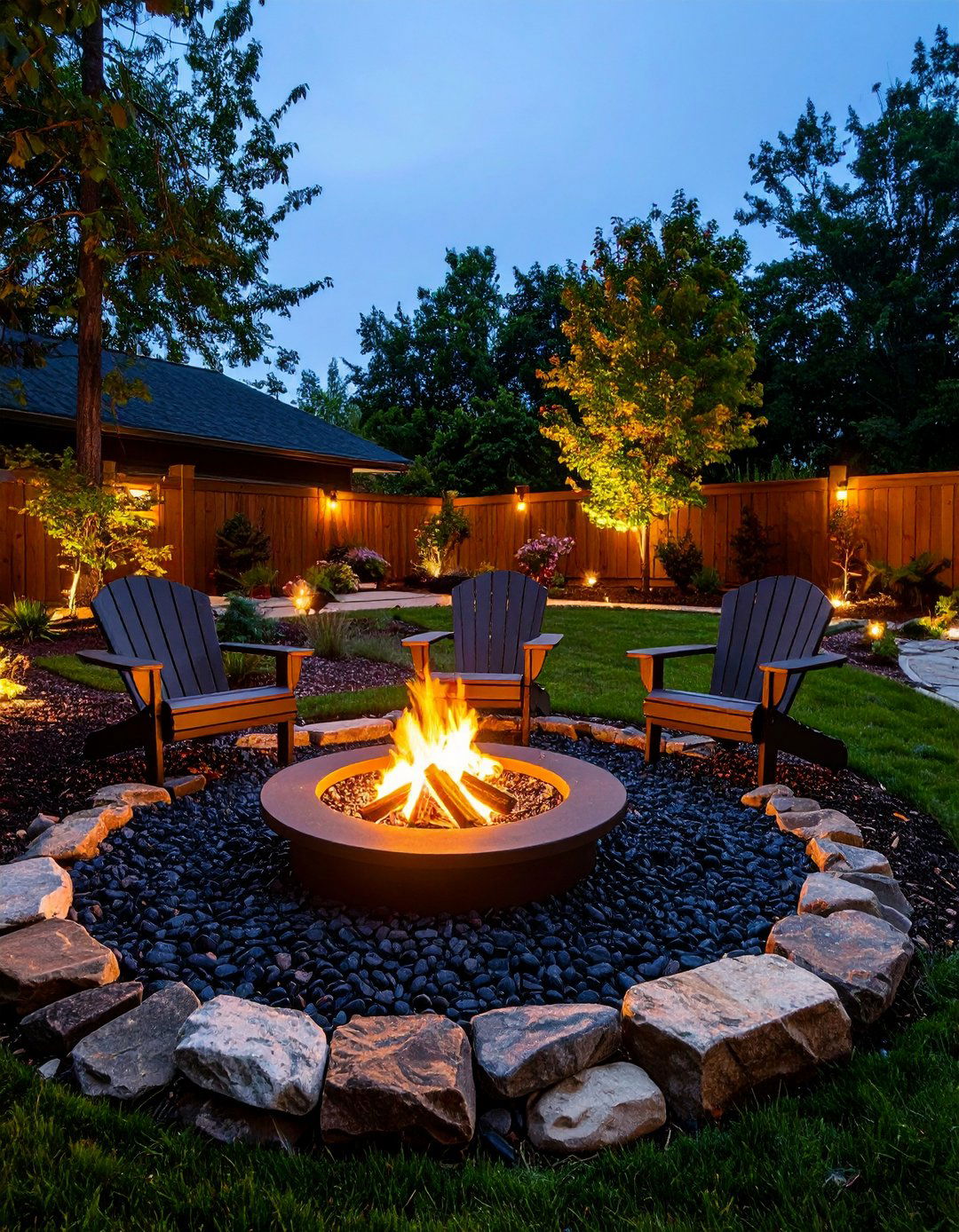
A glowing ring becomes safer and sleeker when circled by a three-foot band of Black River Rock. Because the stones themselves won’t burn, they create a defensible zone that stops grass fires and drifting embers. Caveat: never pack river rocks inside the pit where direct flames can super-heat residual moisture and cause explosions—use heat-rated lava rock there instead. Outside the steel or masonry pit, the smooth black apron collects stray sparks, provides drainage under Adirondack chairs, and eliminates mowing right up to the ring. For mood, tuck low-voltage uplights that bounce amber glints across the pebble field.
7. Succulent Showcase Bed on Black River Rock

Shallow-rooted echeveria, aloe, and barrel cactus pop like living jewelry against ebony stones. Spread a two-inch blanket of Black River Rock over sandy soil; the rock suppresses weeds and reflects warmth upward, encouraging faster drying between sparse desert waterings. Just note that darker stones can overheat delicate leaves in all-day baking sun, so cluster taller agave as afternoon shade umbrellas. Dribble pea-size gravel into crevices to wedge rosettes upright, then add one sculptural boulder for scale. You’ll have a bold, low-maintenance tapestry that needs only the occasional debris blow-off to stay showroom sharp.
8. Water-Smart Xeriscape Carpet of Black River Rock
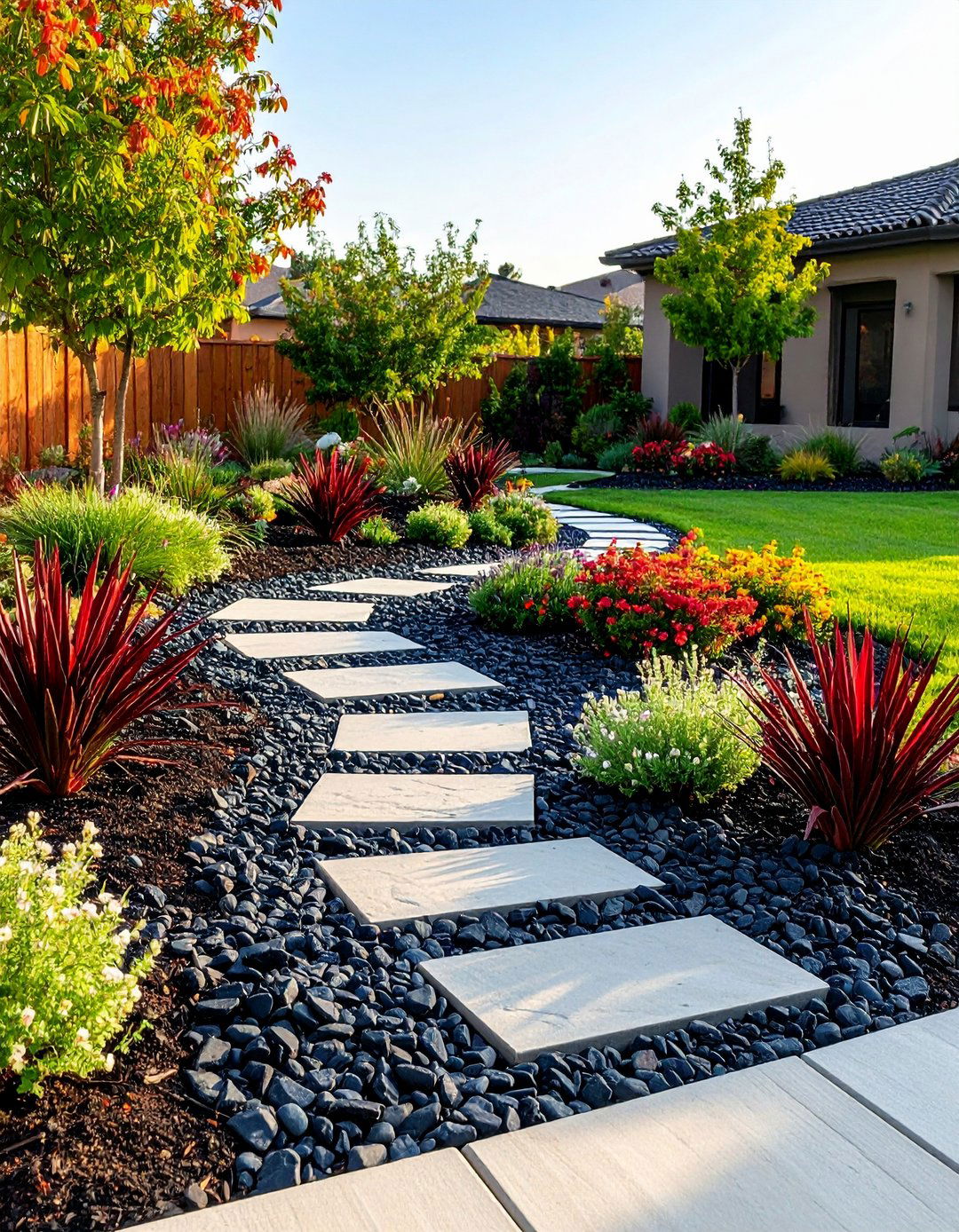
When irrigation restrictions bite, replace thirsty turf with a sheet mulch of cardboard, a dusting of compost, and a five-inch top layer of Black River Rock. The stone acts like permanent mulch: it blocks sunlight, stomps weeds, and minimizes evaporation, cutting your outdoor water use dramatically. Pocket beds of drought-stars such as Russian sage and red yucca right through the rock for color surprise. Because the pebbles never decay, they pay back the higher upfront cost in a few seasons of skipped bark-mulch refreshes. Edge the area with steel strips to maintain the crisp outline as plants mature.
9. Black-and-White Pebble Mosaic Patio Detail

Transform a dull concrete pad by inlaying rivers of black stones between bands of white pebbles to form swirling mandalas or geometric fans. Lay out your pattern dry, then bed the stones in mortar flush with the slab, so chairs glide smoothly. The stark monochrome design feels both coastal and modern, and the natural texture adds barefoot comfort. Limit grout lines to control cracking and seal annually for stain resistance. Pair the mosaic with matte-black planters to echo the pebble tones and keep the palette sophisticated instead of carnival.
10. Driveway Accent Ribbon of Black River Rock

Boost curb appeal without repouring concrete by cutting a 12-inch strip at the center or edges of your drive, tamping crushed base, and filling with Black River Rock. The deep band visually slims a wide slab, drains tire splash, and breaks up heat-absorbing pavement—handy in summer micro-climates. Line the ribbon with rust-proof edging to corral stones away from tires. Evening headlights graze the pebble facets, turning arrival into a light show. Bonus: if you ever need to run irrigation or low-voltage wiring across the drive, lift the rock ribbon instead of cutting concrete.
11. Mirror-Edge Pond Liner Concealed by Black River Rock
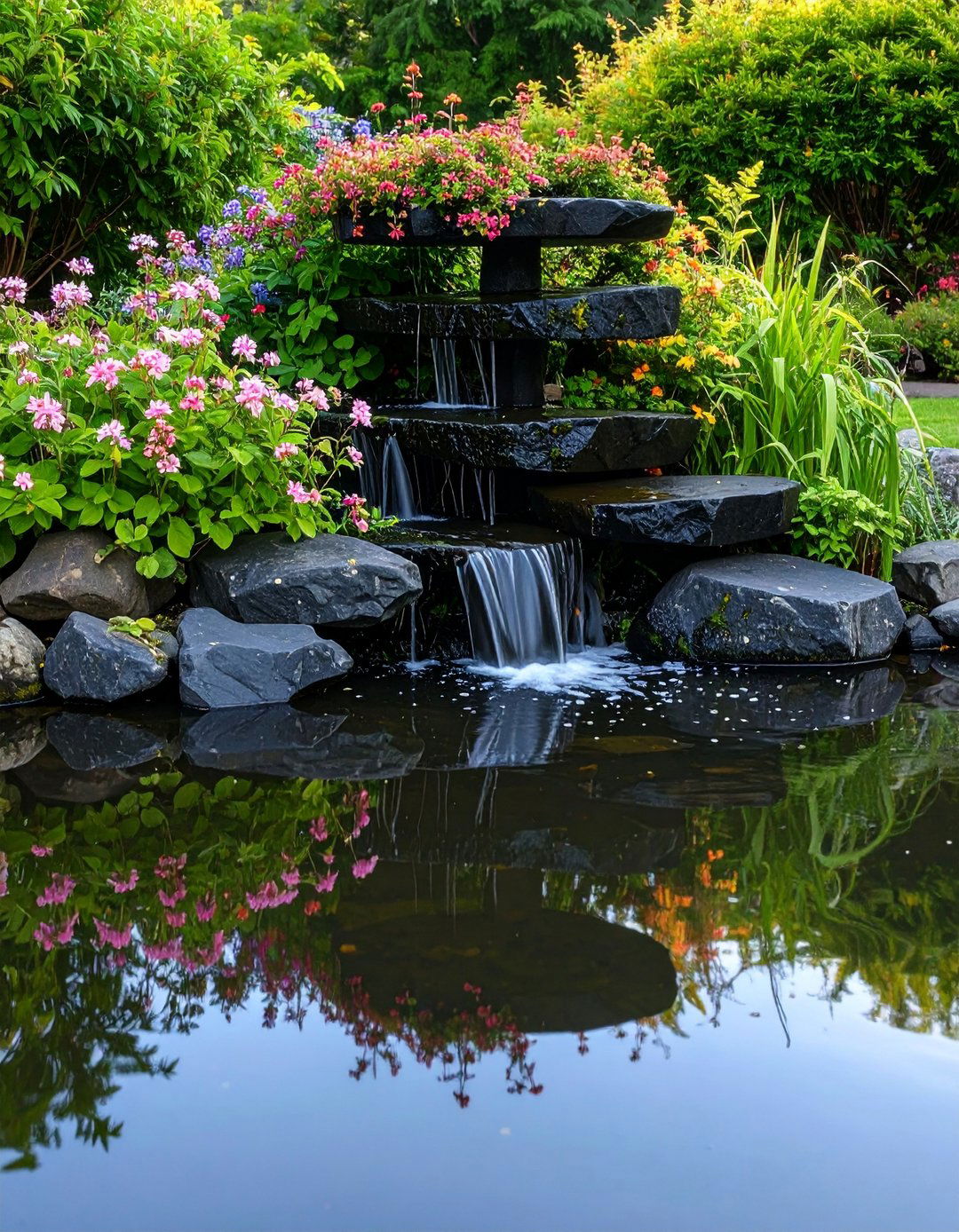
Pond liners often betray themselves at the shore; cloak that plastic lip with a double row of Black River Rock, letting the top course cantilever slightly over the water. The dark stones create a clean mirrored edge that amplifies reflections of sky and lilies while shielding the liner from UV breakdown and beak punctures. Because river rock is smooth, it won’t scrape fish searching for algae snacks. Plant creeping jenny between outer stones so golden foliage cascades toward the water, doubling the color drama against the inky rock border.
12. Raised-Planter Top-Dress in Black River Rock
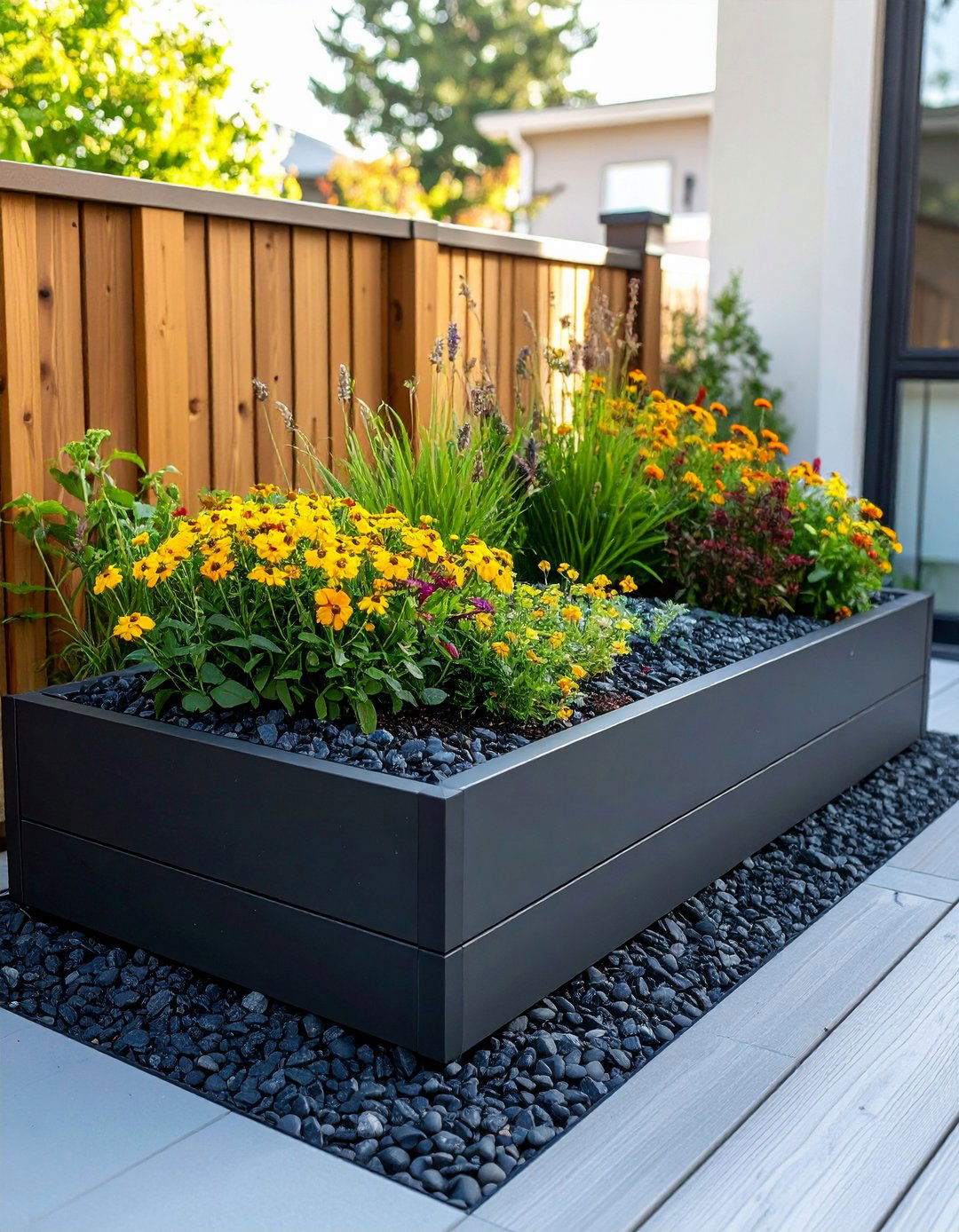
Box planters quickly dry out at the surface. Capping soil with a one-inch layer of Black River Rock reduces moisture loss, cuts fungus-gnat breeding, and prevents potting mix from splashing onto foliage during watering. The weight keeps lightweight planters stable on windy balconies and acts as a tidy backdrop for seasonal color swaps. For veggies, pull the stones aside at sowing time, then return them as seedlings establish. Because the rock is inert, it won’t affect soil pH—perfect for fussier plants like blueberries that demand acidic media.
13. Long-Term Tree Ring Instead of Organic Mulch
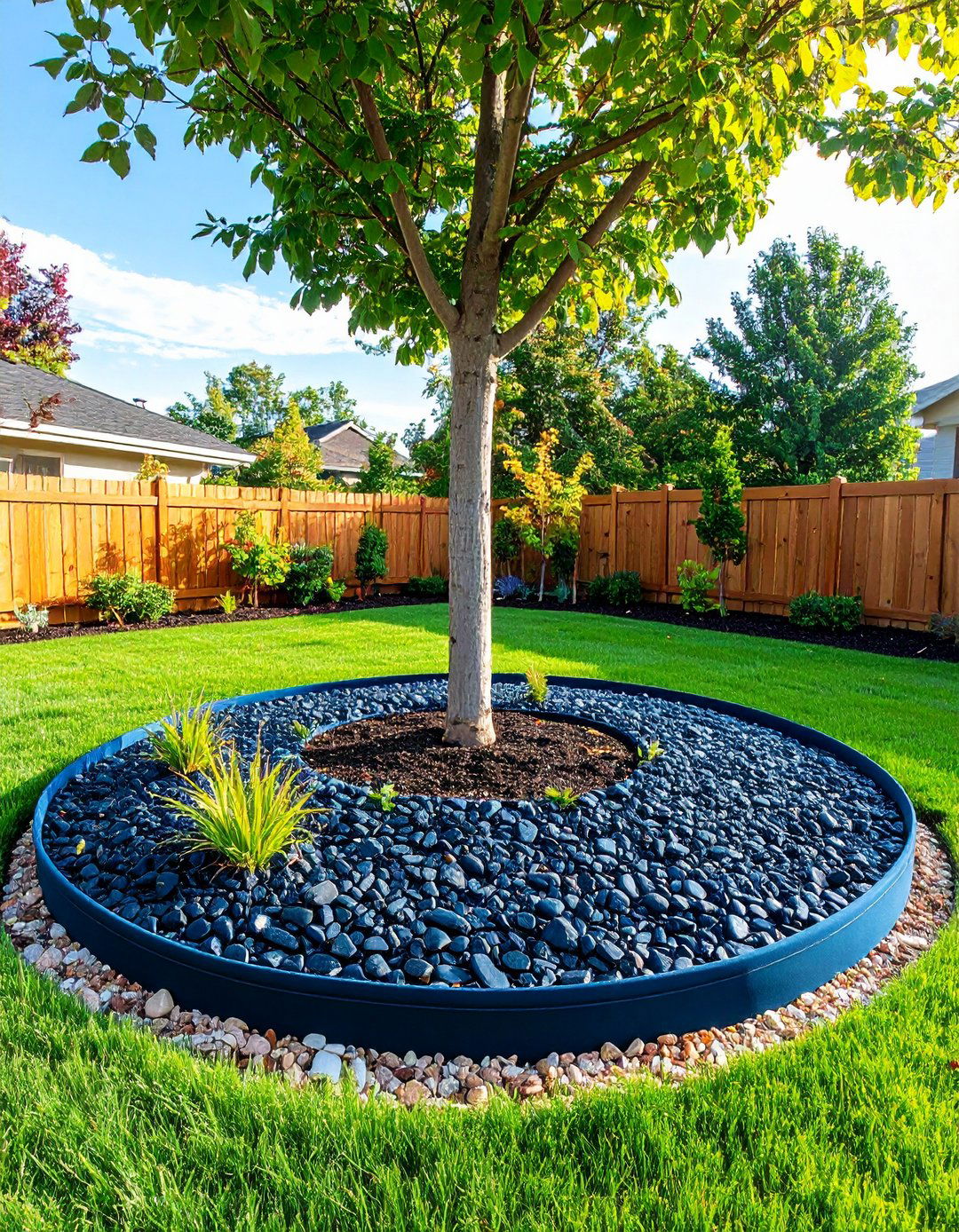
Organic mulch decomposes into nitrogen but also invites termites near foundations. A three-foot-wide ring of Black River Rock delivers weed suppression and mower-tire clearance without feeding pests or demanding yearly refreshes. Spread the stones two inches deep over breathable fabric, keeping them six inches from the trunk flare for gas exchange. The dark surface warms spring soil, jump-starting root growth in cooler climates. Periodically blow out leaf litter to prevent humus buildup that could negate the low-bug advantage.
14. Erosion-Proof Armor on Gentle Slopes
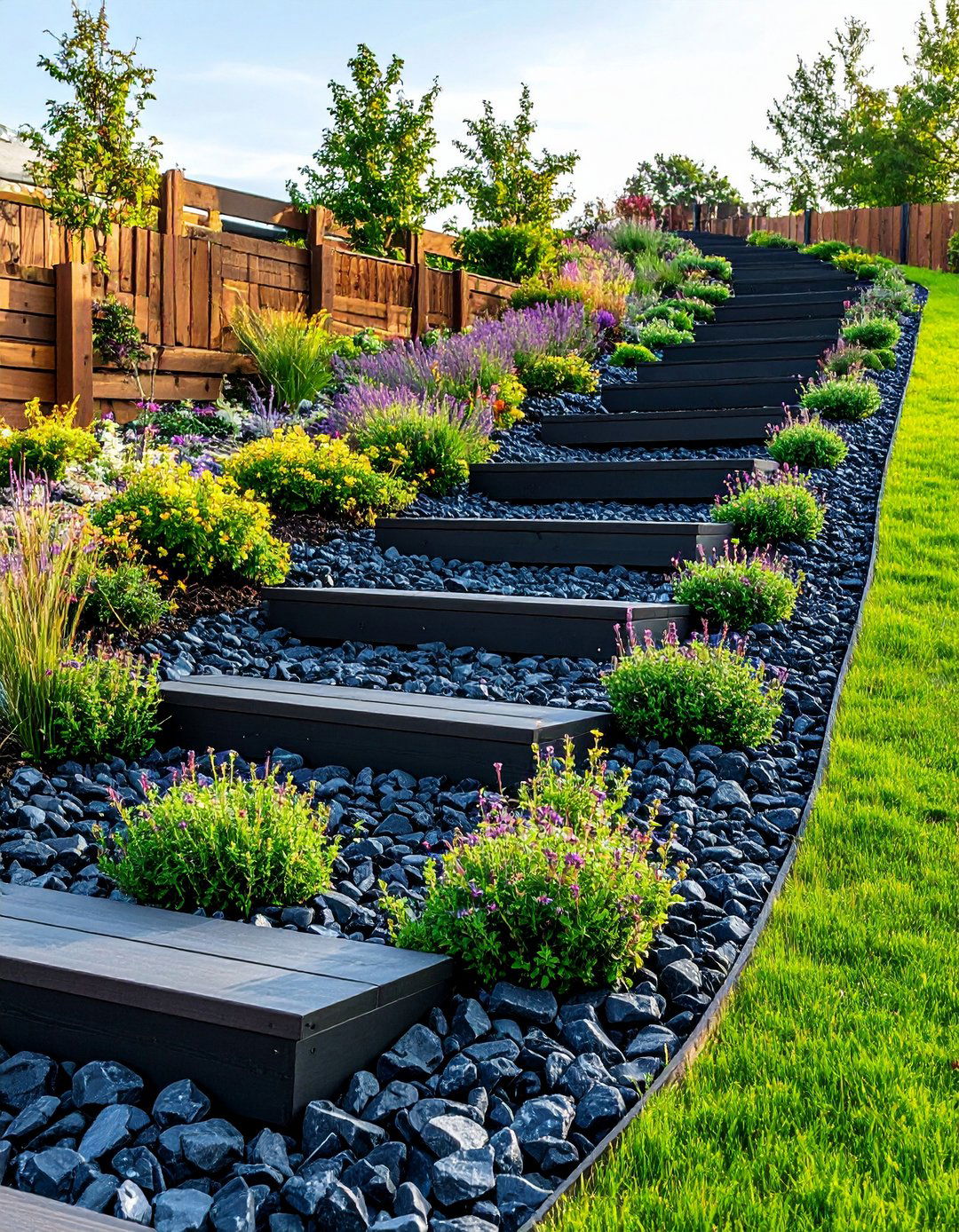
Rain racing down a bank scours bare soil. Armor the grade with staggered terraces of landscape ties infilled with Black River Rock. The round stones diffuse impact energy while their mass resists downhill creep. Nest stoloniferous groundcovers such as creeping thyme between terraces; foliage fingers knit into the stones, further locking the surface. Supplement with spike-rooted grasses whose blades sway above the austere black base, adding movement without compromising stability.
15. Wildlife-Friendly Rock Border Habitat

A loose double row of Black River Rock framing meadow beds creates crevices for insects and cool retreats for toads, which repay the favor by patrolling slugs. Leave occasional fist-size gaps so beneficial ground beetles can burrow. In sunny spots, the warm stones lure cold-blooded pollinators in the morning, boosting garden activity. Add native bunchgrasses behind the rock band; their seed heads feed songbirds while muted stalks contrast the pebbles’ sheen.
16. Rain-Chain Splash Zone of Black River Rock
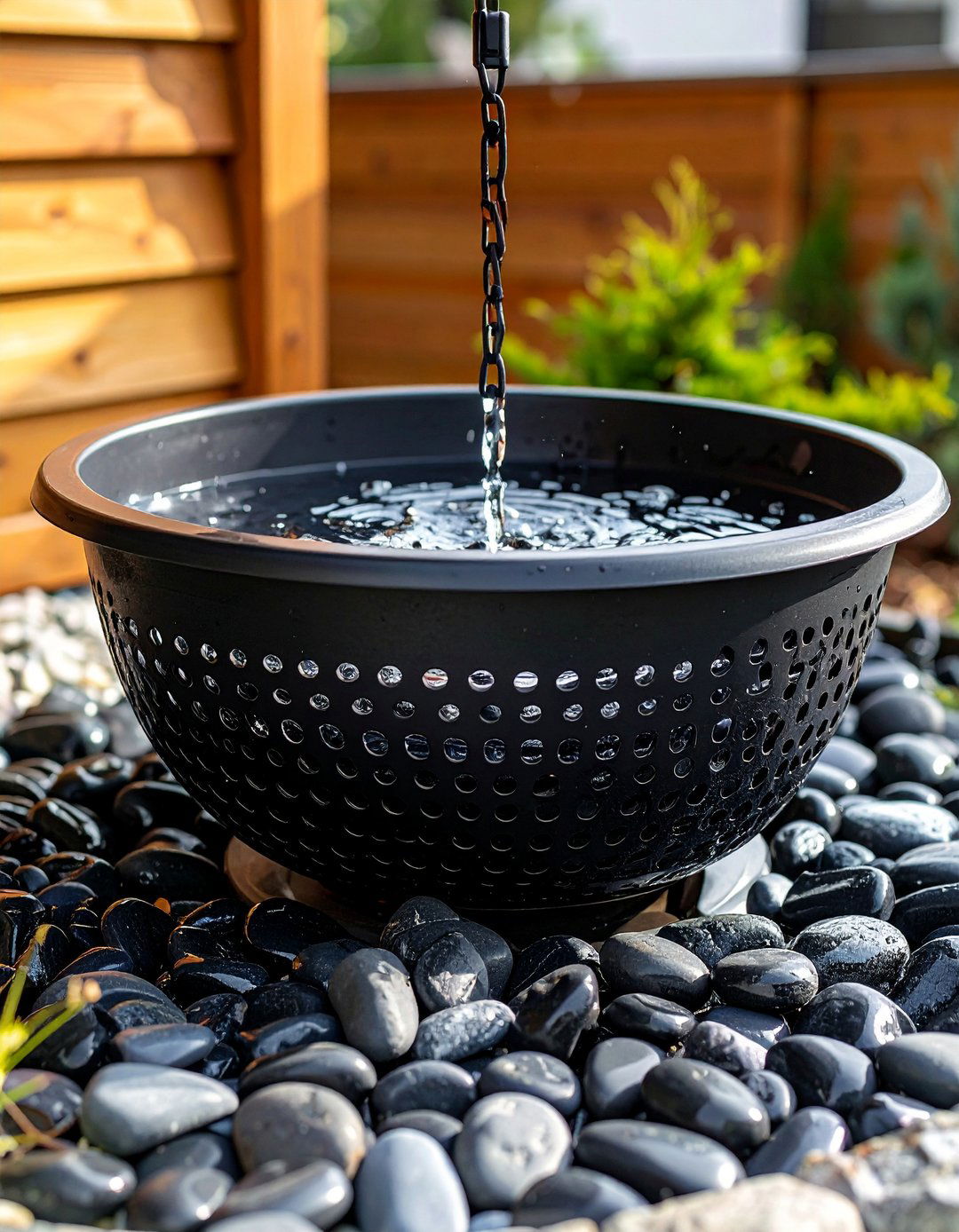
Metal rain chains are gorgeous until roof runoff hammers bare soil, causing muddy backsplash on walls. Dig a two-foot-wide basin beneath the chain and pack it with Black River Rock. Water slips between stones, eliminating splash while audible trickles amplify rain ambience. Nest a perforated drainpipe under the basin to redirect overflow if needed. Replace the top inch of pebbles annually to keep algae slicks at bay and maintain that crisp coal-colored finish.
17. Minimalist Courtyard Groundcover in Black River Rock
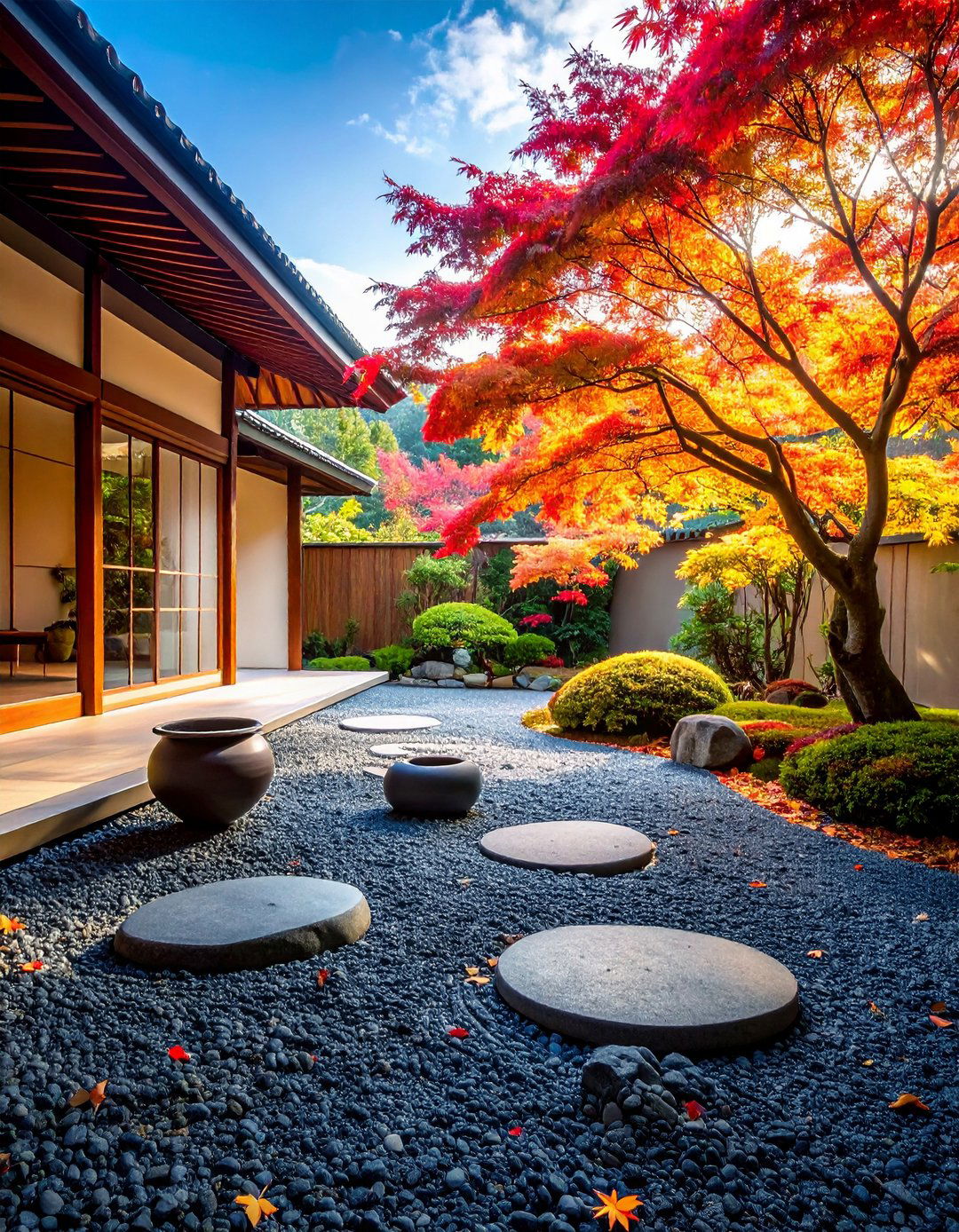
When plants are accents rather than the star, cover exposed courtyard floor with a deep, even blanket of Black River Rock. The uniform color simplifies sightlines, making sculptural pots or a single Japanese maple command full attention. Uplights hidden among stones create a floating illusion at night, as shadows erase pebble texture into a sleek black plane. Sweep leaves weekly; the smooth stones let debris slide easily onto a dustpan, preserving the zen gallery vibe without fuss.
18. Houseplant Container Topper of Black River Rock

Pebbles aren’t just for outdoors. Dress indoor fiddle-leaf figs and monsteras with a decorative inch of Black River Rock. The weight stabilizes tall stems, keeps curious pets from digging, and cuts evaporation so watering intervals stretch longer. Because the stones are non-reactive, they won’t leach minerals that cause salt crusting on pot edges. Rinse the rocks quarterly in a colander to flush dust, then return them—instant refresh with zero waste.
19. Heat-Retaining Micro-Climate Strip for Tender Herbs
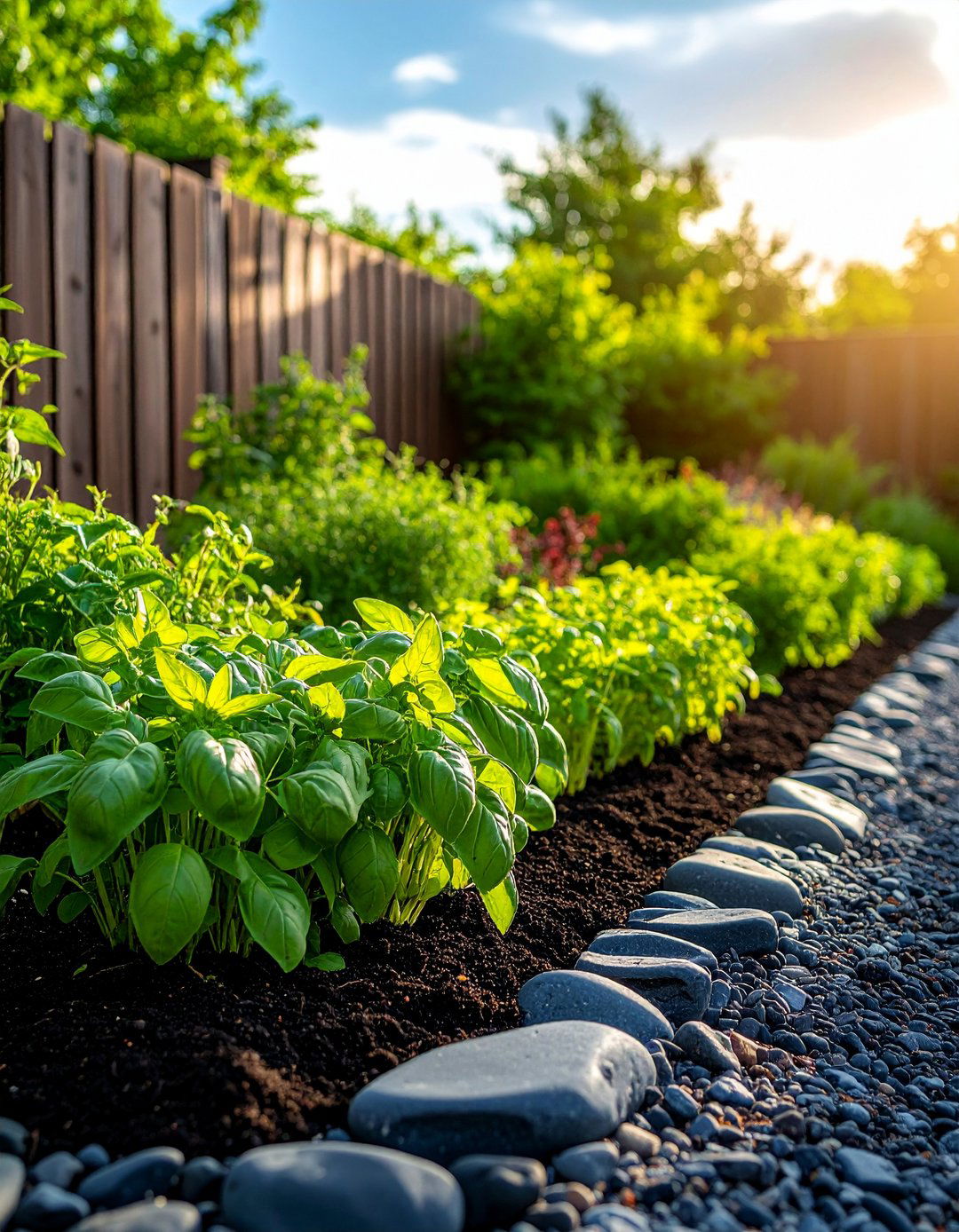
Cold nights can stunt basil and peppers. Flank the south side of beds with a one-foot-wide belt of Black River Rock; the stones bank solar warmth by day and bleed it back after sunset, nudging temperatures a few degrees higher. Position heat-loving herbs within eight inches of the strip for the mini-greenhouse effect. In frosty regions, cover the belt with clear plastic cloches at night to trap additional radiant heat, extending harvest by several weeks without expensive heaters.
20. Weed-Barrier Path through Utility Easements
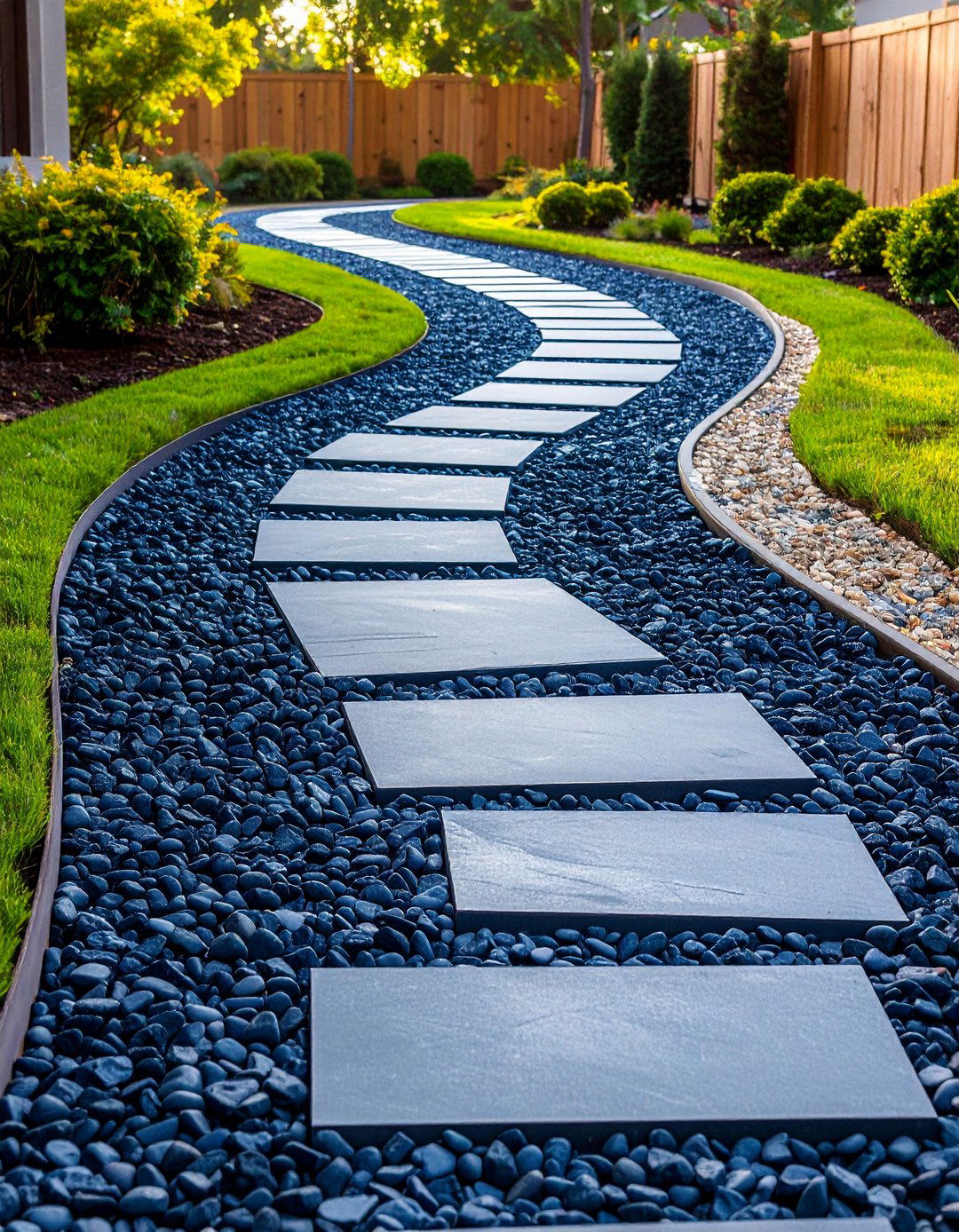
Utility side yards often become weedy eyesores. Sheet-mulch the strip with newspaper, lay permeable fabric, and top with three inches of Black River Rock. Heavy stones block sun and resist wind so you’re not chasing bark mulch into the neighbor’s pool. Insert large stepping pavers level with the pebble surface for stable access to meters. Annual maintenance is a quick leaf-blower pass—no herbicides, no edging, no re-mulching chores.
Conclusion:
Black River Rock earns its keep by merging sculptural flair with hardworking resilience. Whether you need erosion control on slopes, sparkling definition around ponds, or a drought-proof lawn alternative, these twenty ideas show how one material can deliver bold aesthetics, lower water bills, and cut weekly upkeep. By pairing the stones with site-appropriate plants and thoughtful construction details, you create outdoor spaces that stay sharp for decades—no repainting, re-seeding, or re-mulching required. From zen pockets to driveway ribbons, this versatile dark river stone is the quiet hero of sustainable, eye-catching landscape design.




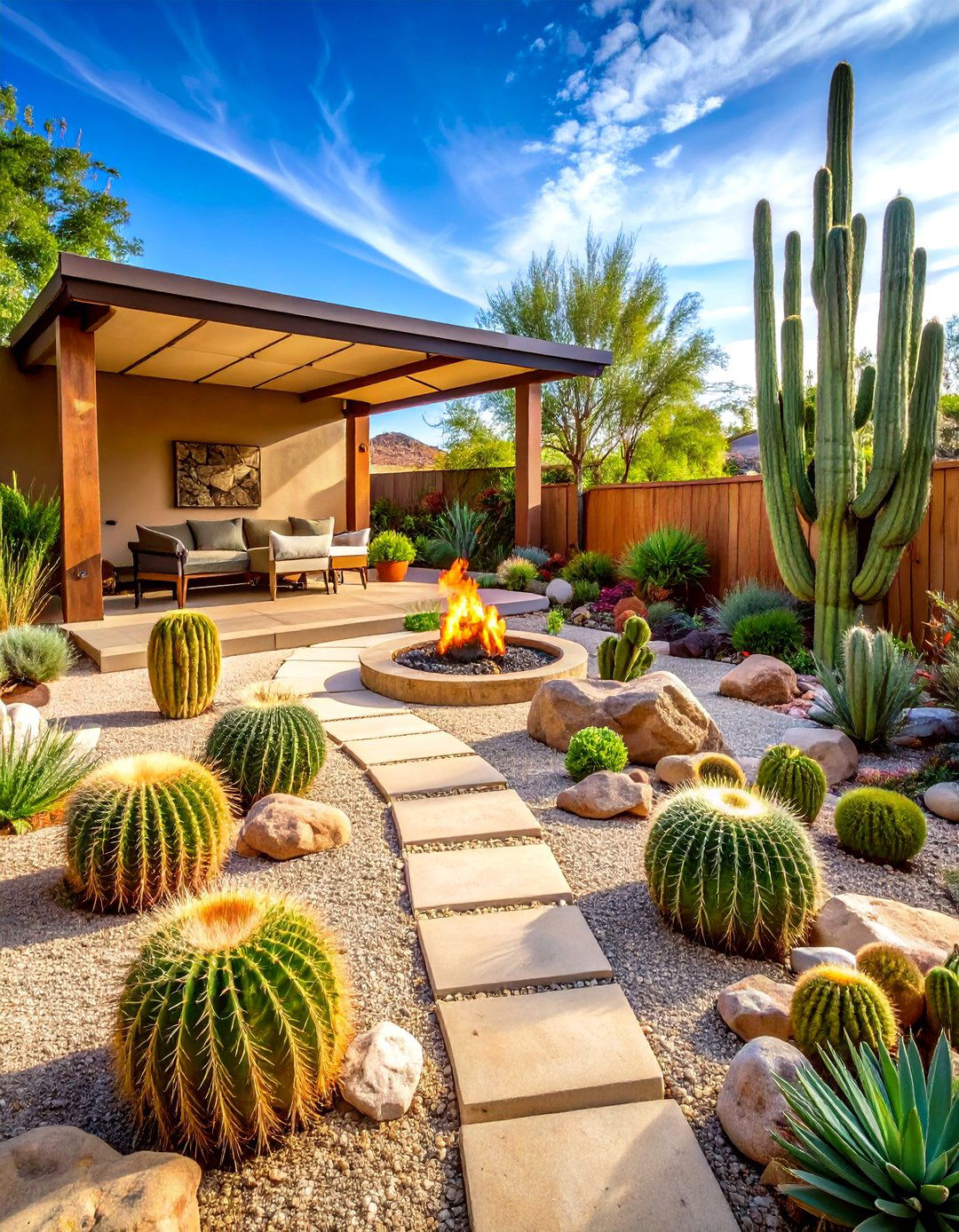
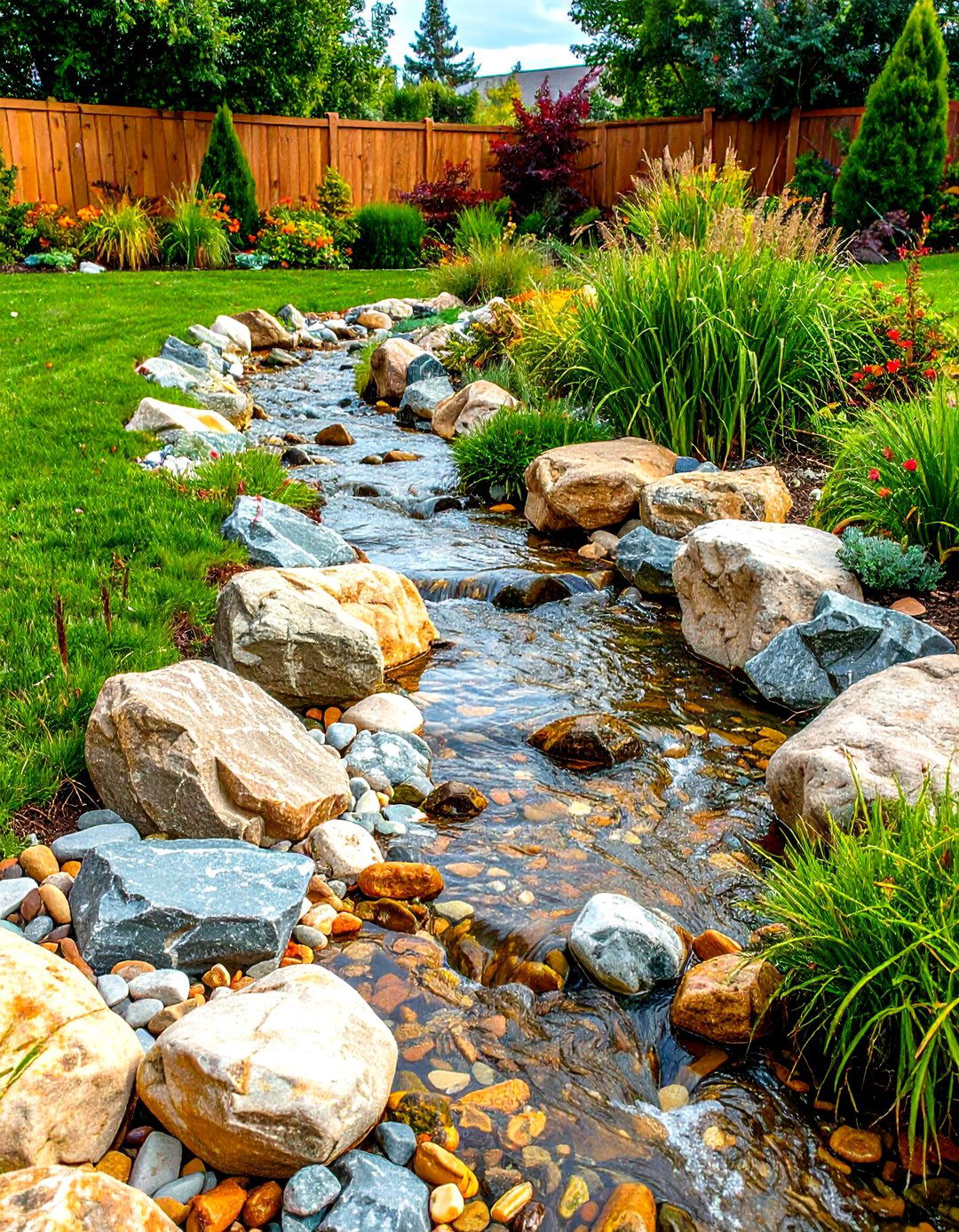
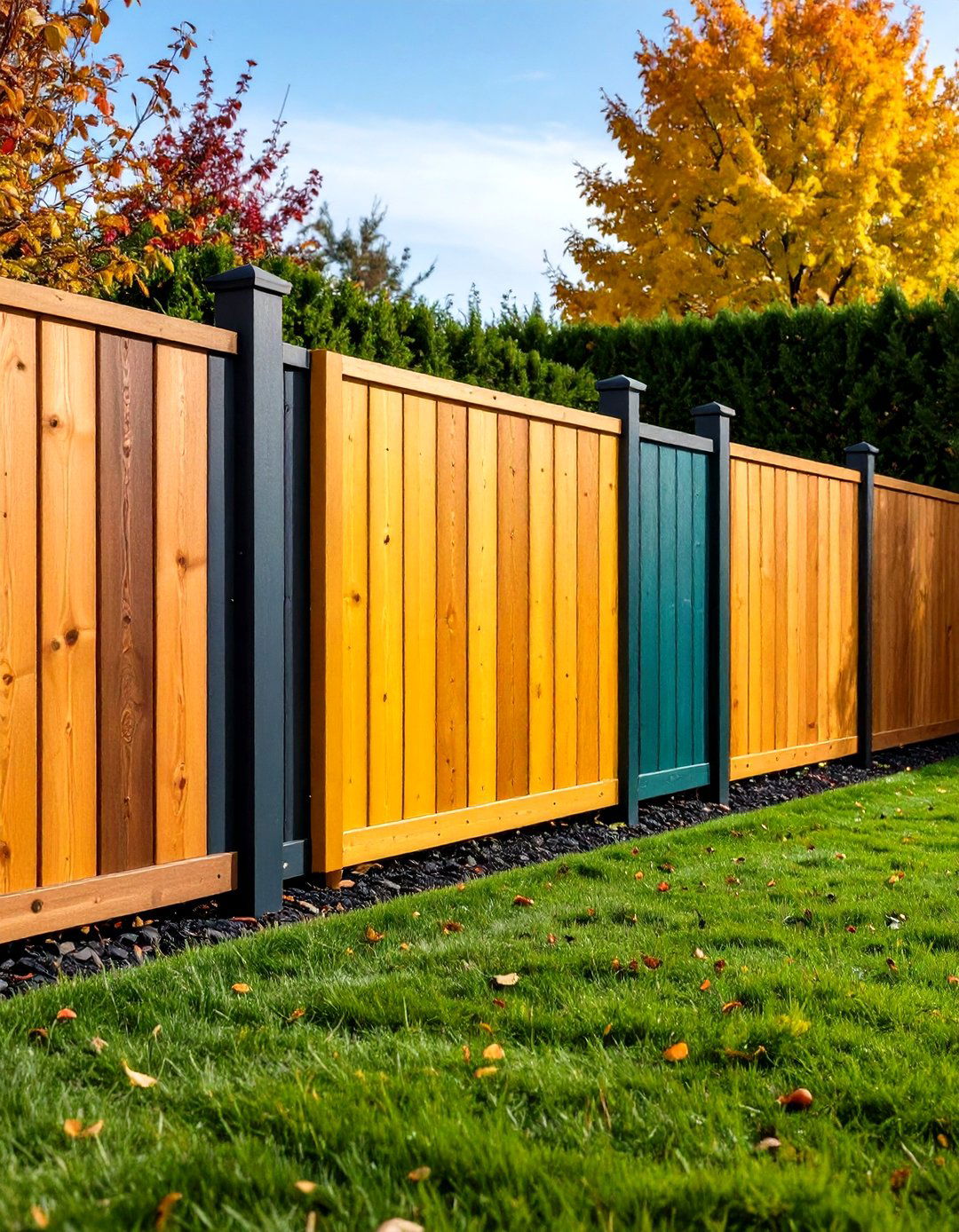
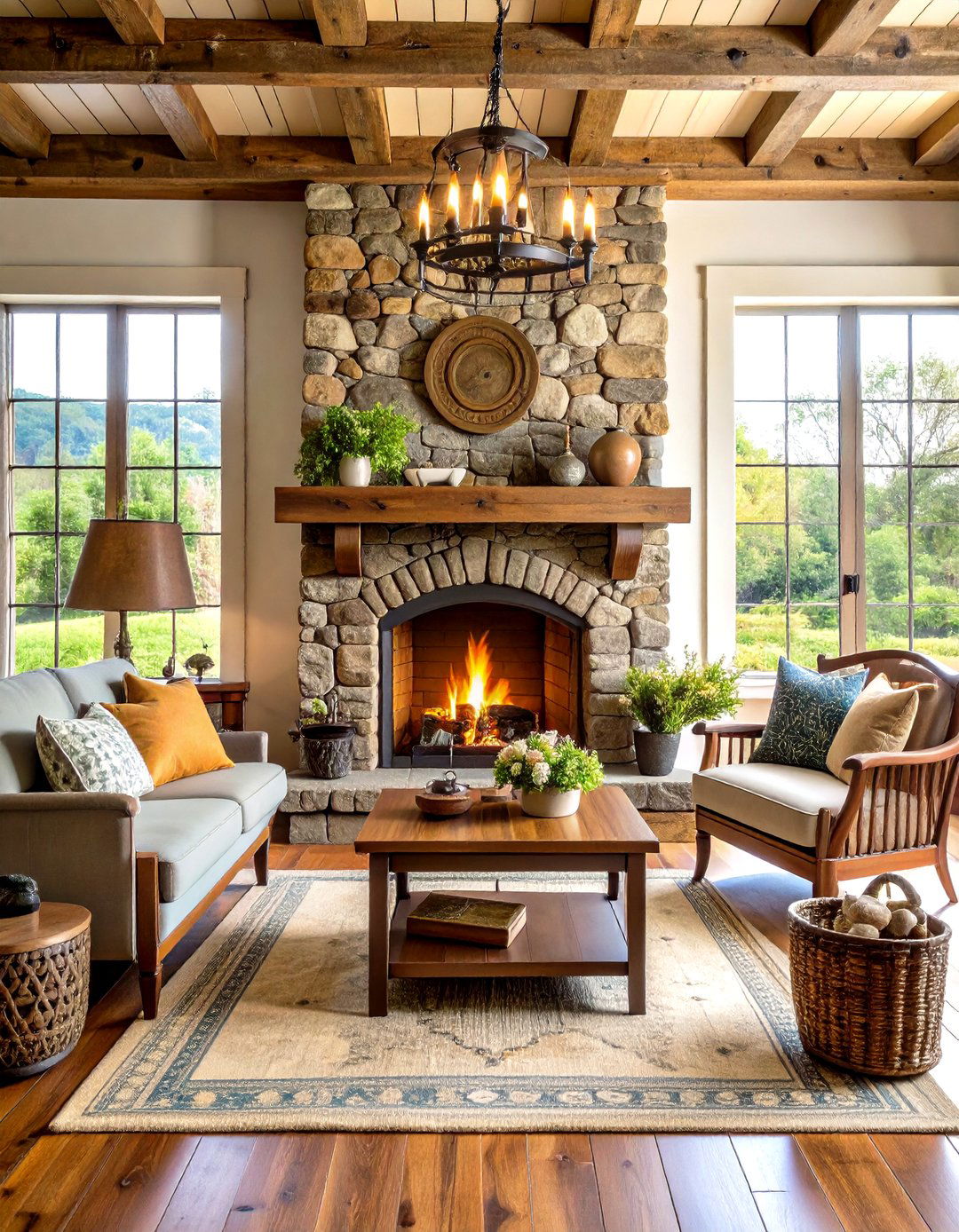
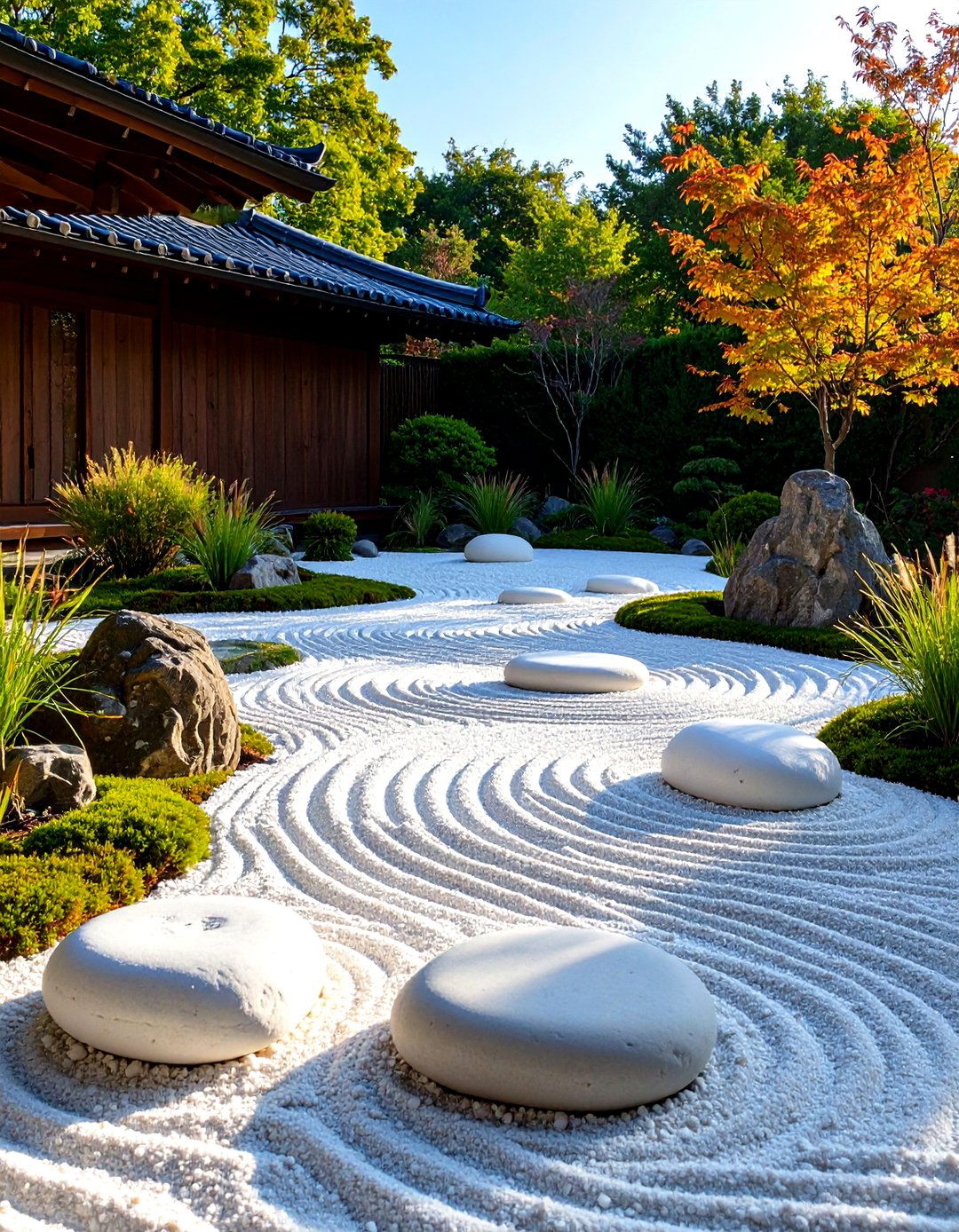
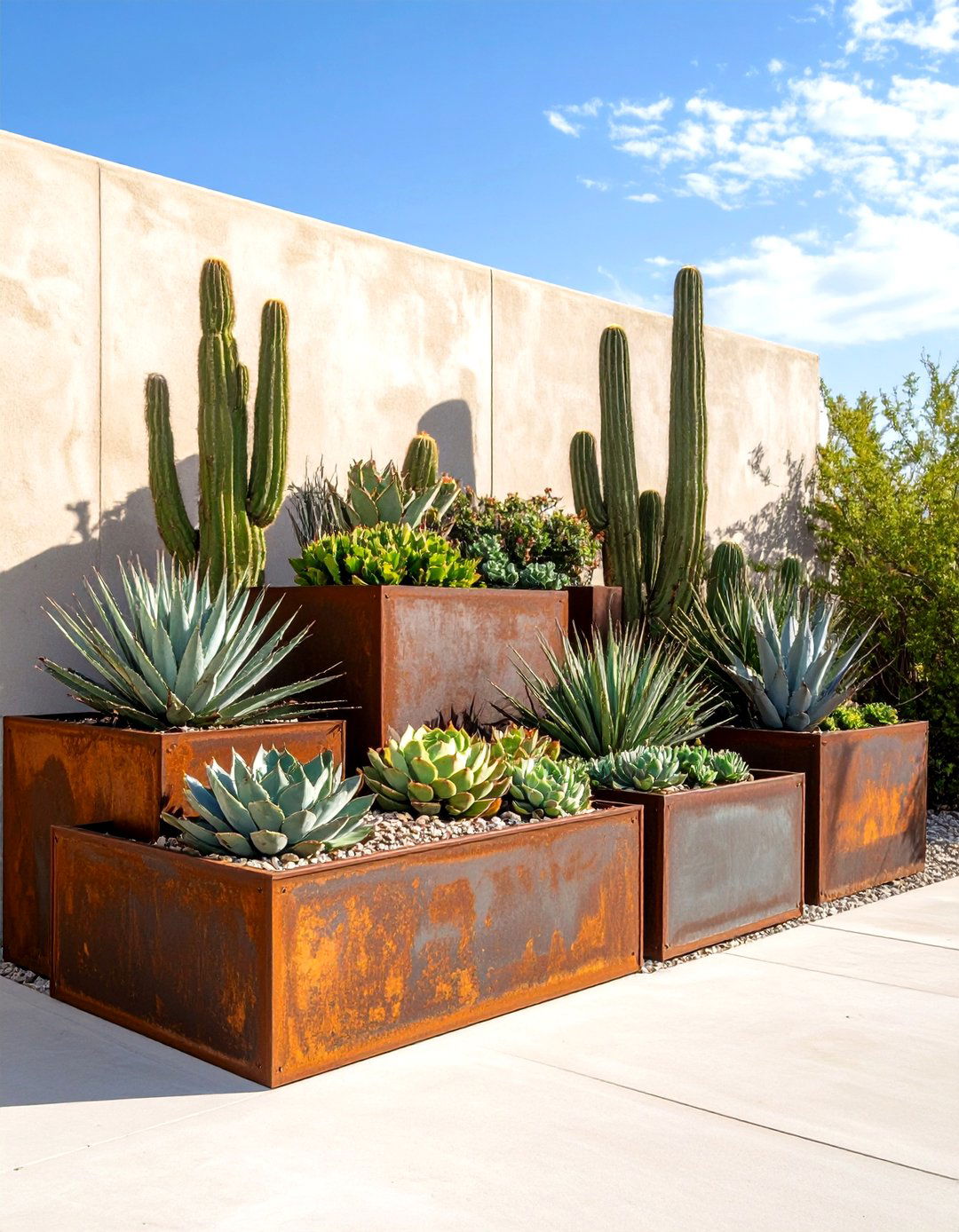
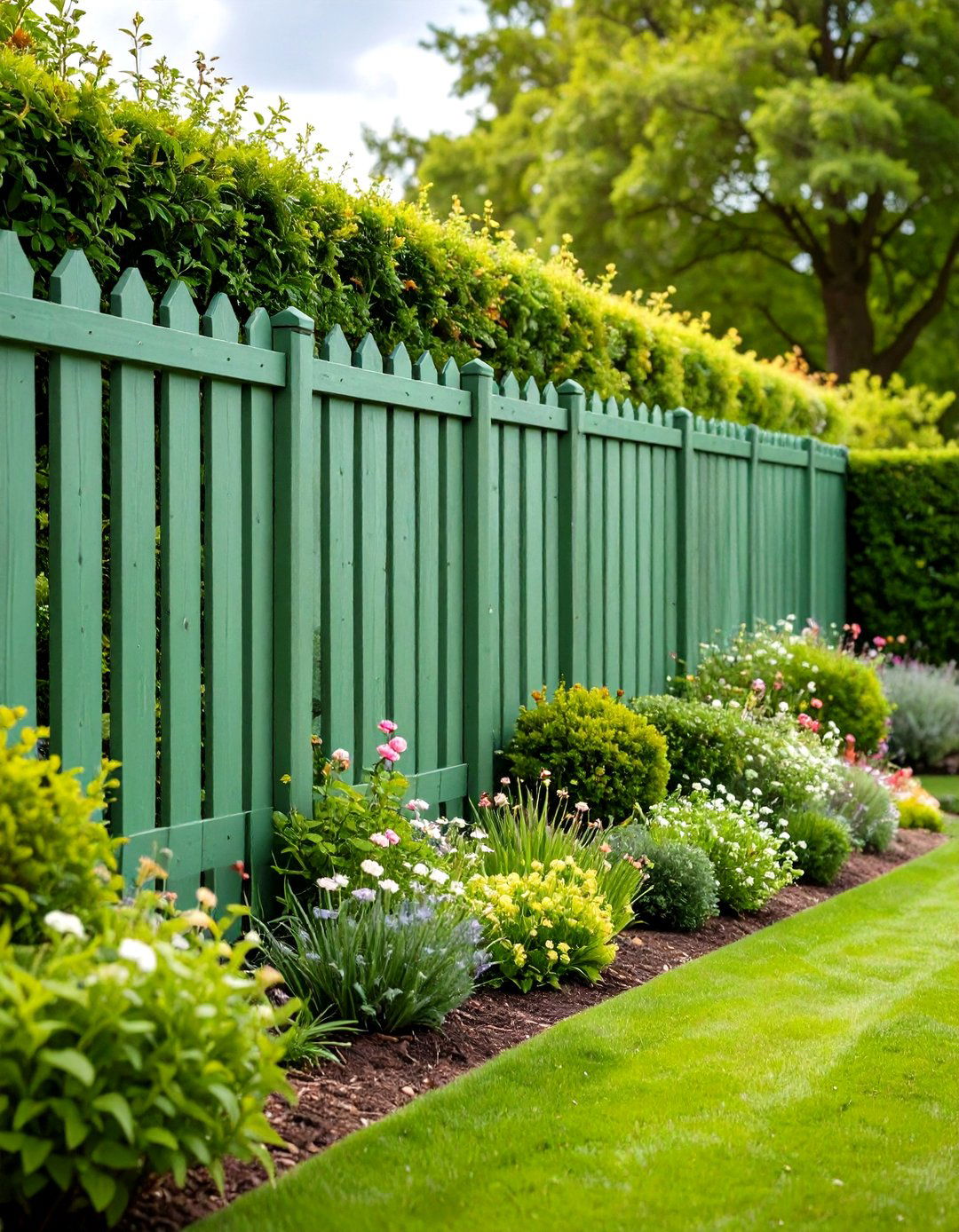
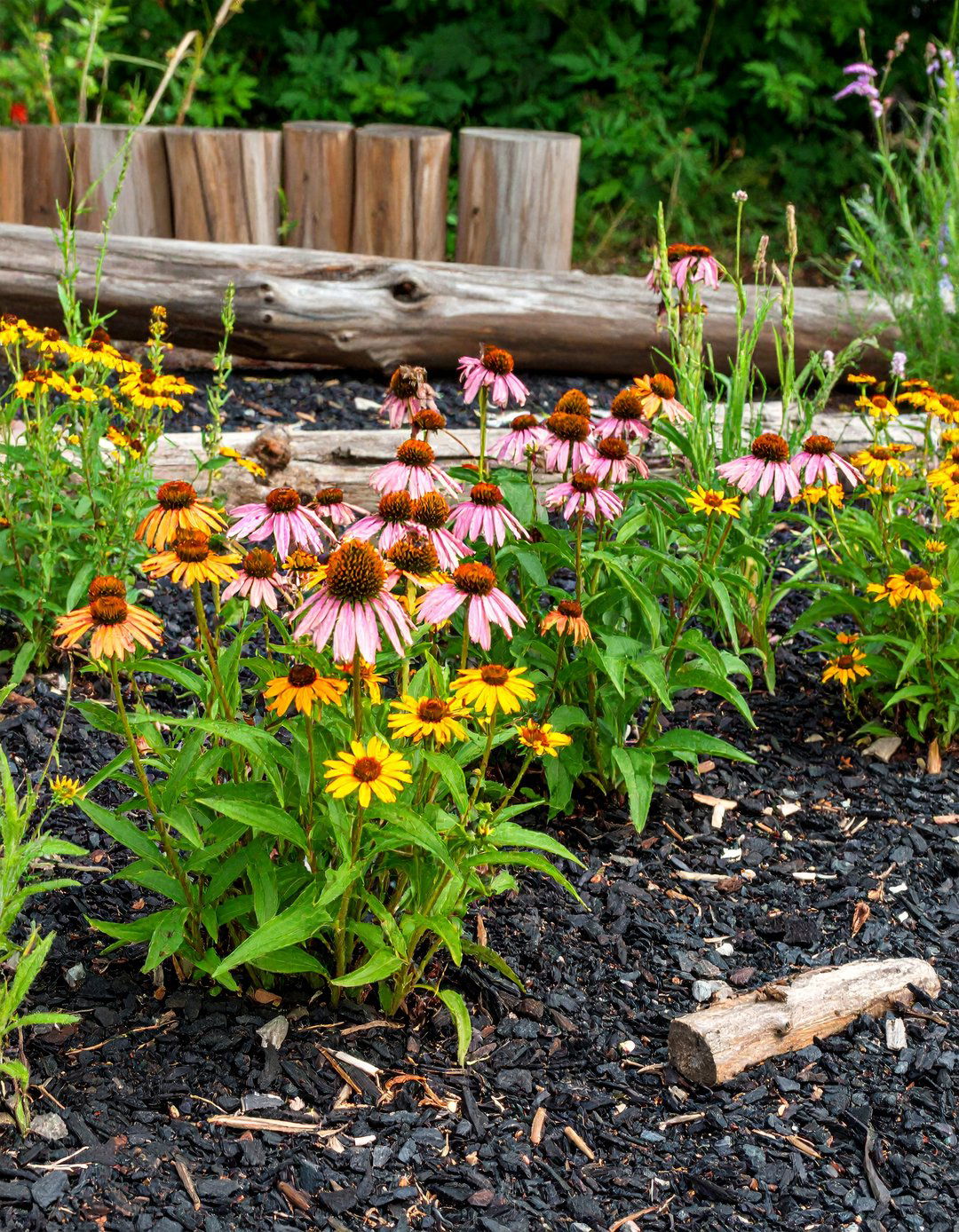
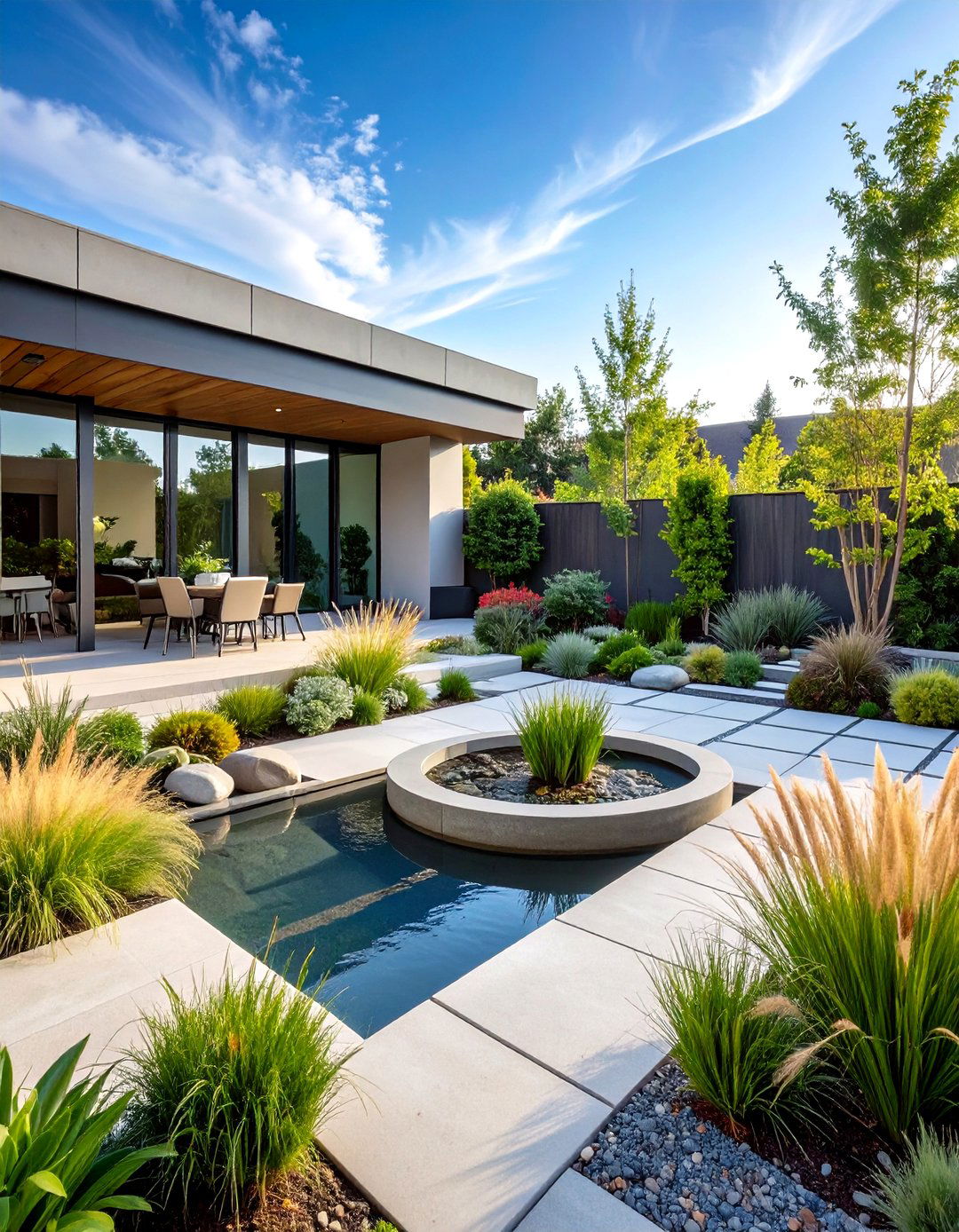
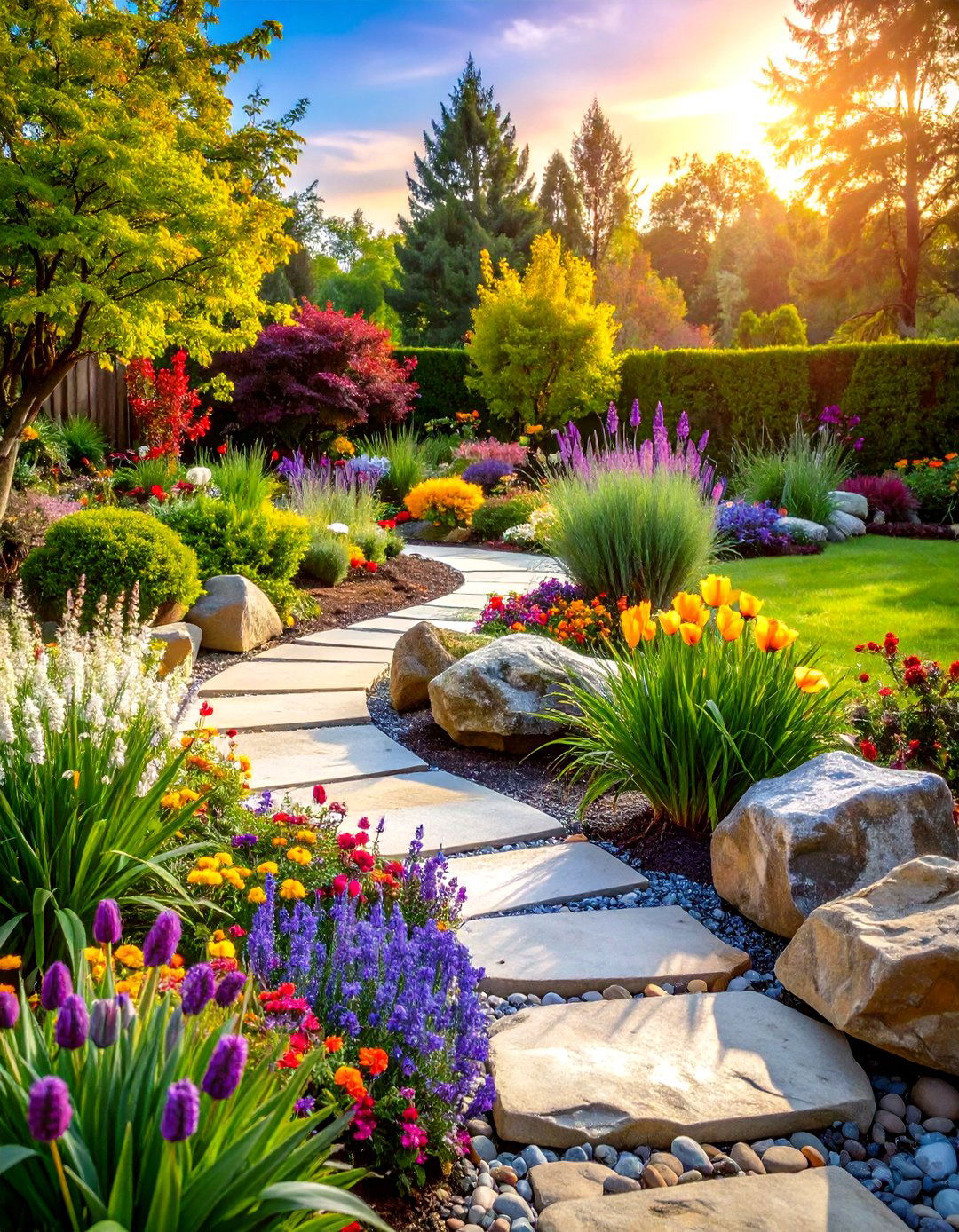

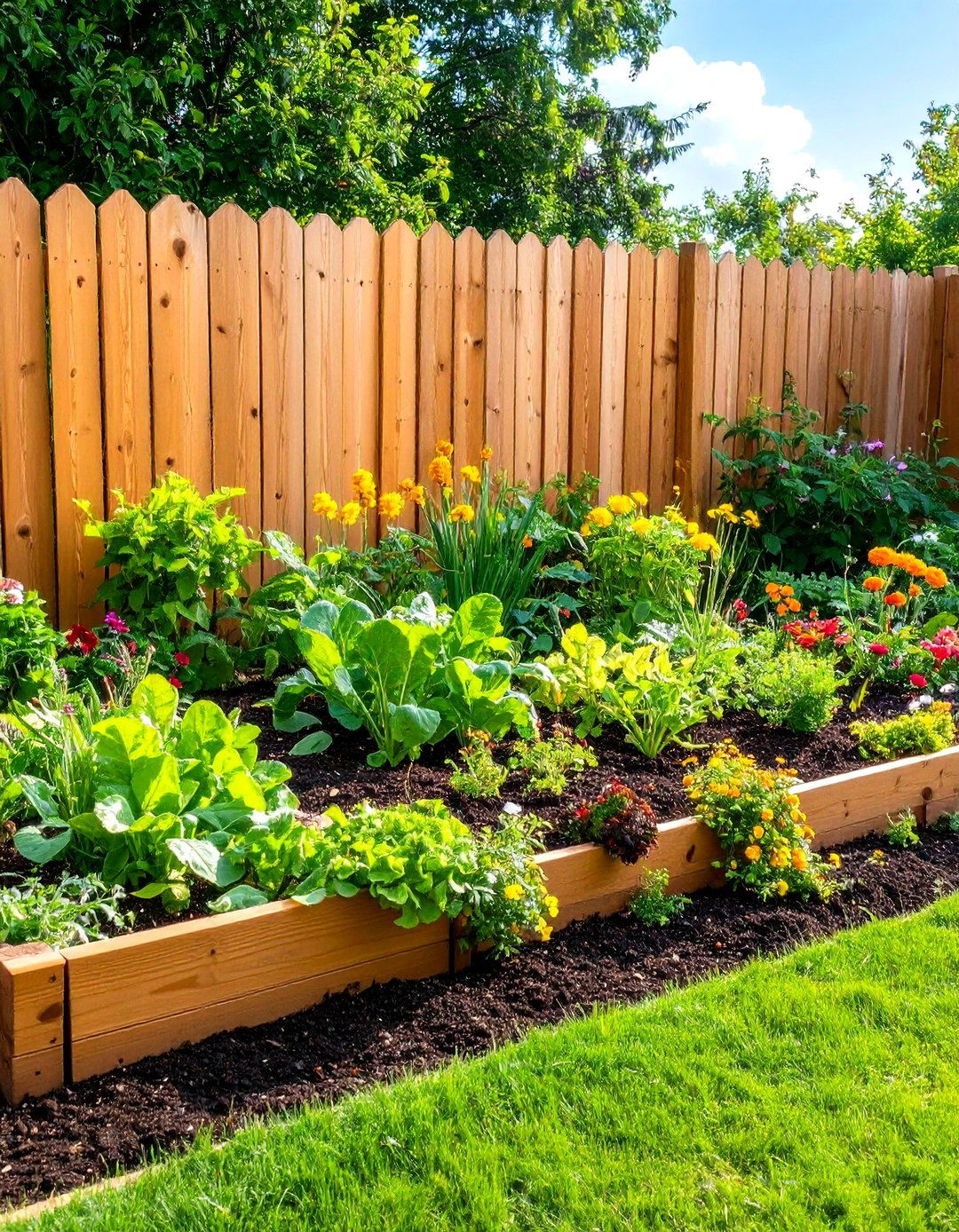

Leave a Reply